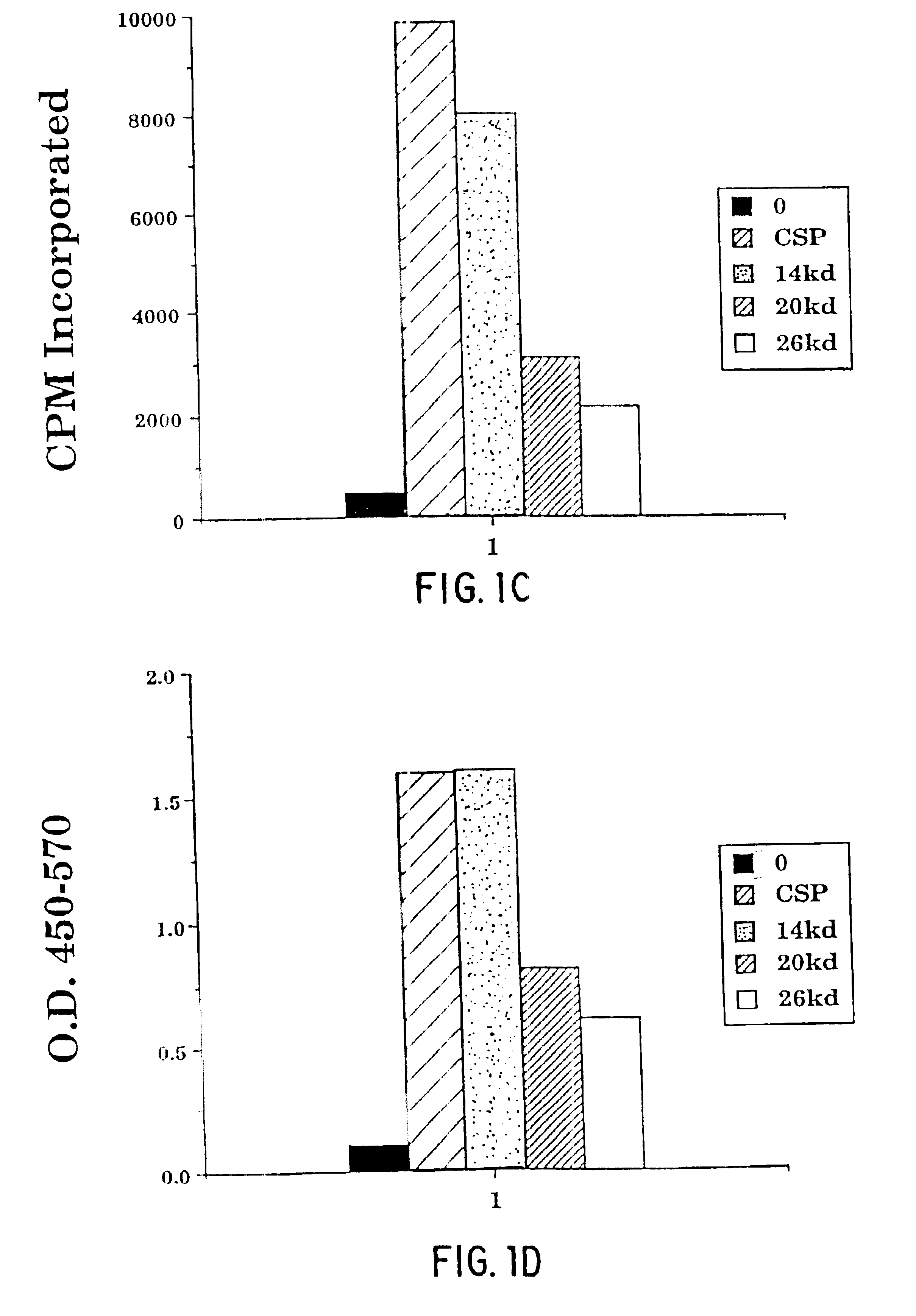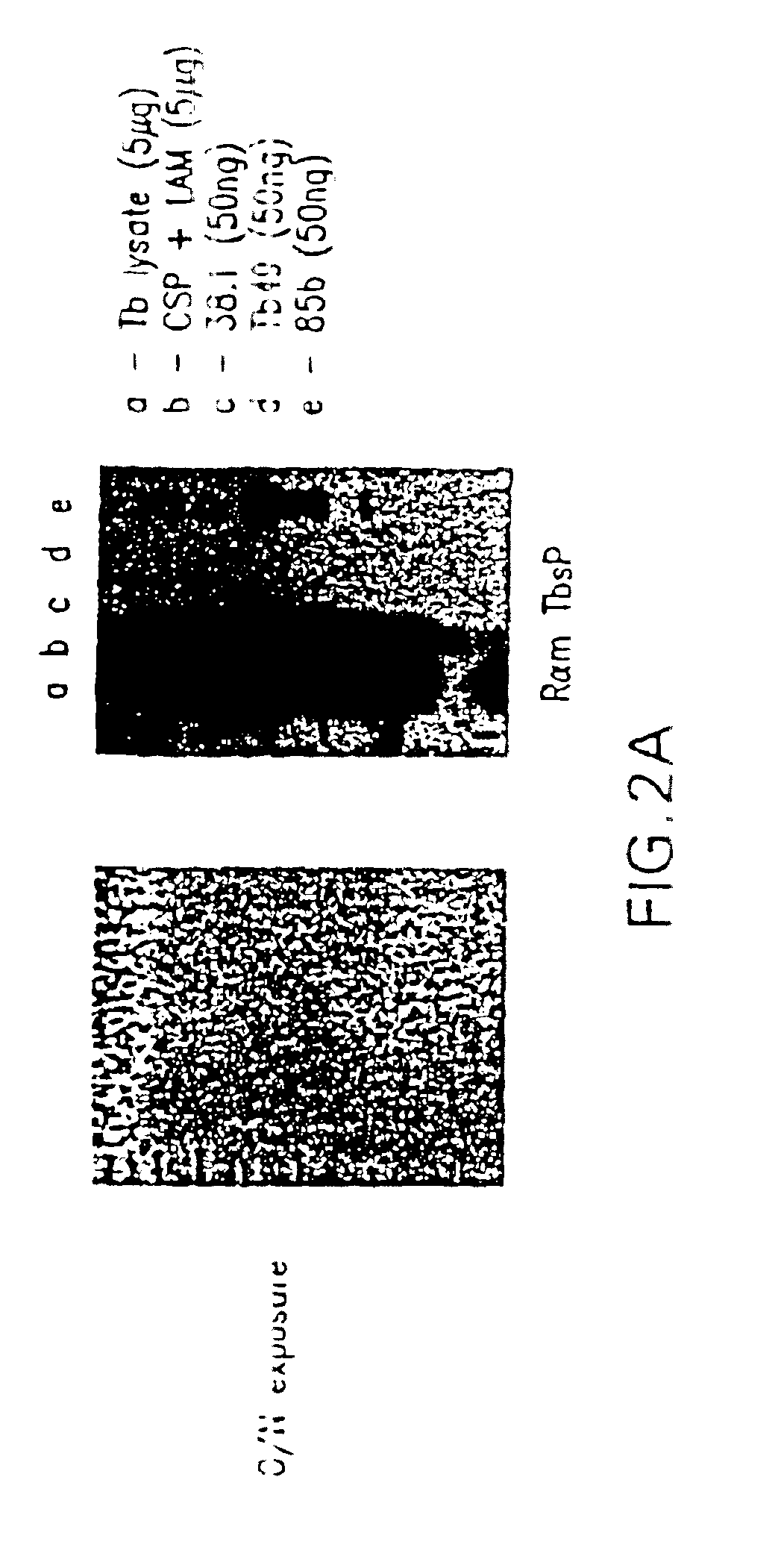Compounds and methods for diagnosis of tuberculosis
a tuberculosis and compound technology, applied in the field of polypeptides, can solve the problems of difficult monitoring of patient behavior, insufficient treatment to prevent the spread of the disease, and serious complications and death
- Summary
- Abstract
- Description
- Claims
- Application Information
AI Technical Summary
Benefits of technology
Problems solved by technology
Method used
Image
Examples
example 1
Purification and Characterization of Polypeptides From M. tuberculosis Culture Filtrate
[0414]This example illustrates the preparation of M. tuberculosis soluble polypeptides from culture filtrate. Unless otherwise noted, all percentages in the following example are weight per volume.
[0415]M. tuberculosis (either H37Ra, ATCC No. 25177, or H37Rv, ATCC No. 25618) was cultured in sterile GAS media at 37° C. for fourteen days. The media was then vacuum filtered (leaving the bulk of the cells) through a 0.45 μ filter into a sterile 2.5 L bottle. The media was then filtered through a 0.2 μ filter into a sterile 4 L bottle. NaN3 was then added to the culture filtrate to a concentration of 0.04%. The bottles were then placed in a 4° C. cold room.
[0416]The culture filtrate was concentrated by placing the filtrate in a 12 L reservoir that had been autoclaved and feeding the filtrate into a 400 ml Amicon stir cell which had been rinsed with ethanol and contained a 10,000 kDa MWCO membrane. The ...
example 2
Use of Patient Sera to Isolate M. tuberculosis Antigens
[0439]This example illustrates the isolation of antigens from M. tuberculosis lysate by screening with serum from M. tuberculosis-infected individuals.
[0440]Dessicated M. tuberculosis H37Ra (Difco Laboratories) was added to a 2% NP40 solution, and alternately homogenized and sonicated three times. The resulting suspension was centrifuged at 13,000 rpm in microfuge tubes and the supernatant put through a 0.2 micron syringe filter. The filtrate was bound to Macro Prep DEAE beads (BioRad, Hercules, Calif.). The beads were extensively washed with 20 mM Tris pH 7.5 and bound proteins eluted with 1M NaCl. The NaCl elute was dialyzed overnight against 10 mM Tris, pH 7.5. Dialyzed solution was treated with DNase and RNase at 0.05 mg / ml for 30 min. at room temperature and then with α-D-mannosidase, 0.5 U / mg at pH 4.5 for 3-4 hours at room temperature. After returning to pH 7.5, the material was fractionated via FPLC over a Bio Scale-Q-20...
example 3
Preparation of DNA Sequences Encoding M. tuberculosis Antigens
[0445]This example illustrates the preparation of DNA sequences encoding M. tuberculosis antigens by screening a M. tuberculosis expression library with sera obtained from patients infected with M. tuberculosis, or with anti-sera raised against M. tuberculosis antigens.[0446]A. Preparation of M. tuberculosis Soluble Antigens Using Rabbit Anti-Sera Raised Against M. tuberculosis Supernatant
[0447]Genomic DNA was isolated from the M. tuberculosis strain H37Ra. The DNA was randomly sheared and used to construct an expression library using the Lambda ZAP expression system (Stratagene, La Jolla, Calif.). Rabbit anti-sera was generated against secretory proteins of the M. tuberculosis strains H37Ra, H37Rv and Erdman by immunizing a rabbit with concentrated supernatant of the M. tuberculosis cultures. Specifically, the rabbit was first immunized subcutaneously with 200 μg of protein antigen in a total volume of 2 ml containing 10...
PUM
| Property | Measurement | Unit |
|---|---|---|
| diameter | aaaaa | aaaaa |
| pressure | aaaaa | aaaaa |
| volume | aaaaa | aaaaa |
Abstract
Description
Claims
Application Information
 Login to View More
Login to View More - R&D
- Intellectual Property
- Life Sciences
- Materials
- Tech Scout
- Unparalleled Data Quality
- Higher Quality Content
- 60% Fewer Hallucinations
Browse by: Latest US Patents, China's latest patents, Technical Efficacy Thesaurus, Application Domain, Technology Topic, Popular Technical Reports.
© 2025 PatSnap. All rights reserved.Legal|Privacy policy|Modern Slavery Act Transparency Statement|Sitemap|About US| Contact US: help@patsnap.com



